Grade 12: Saskatchewan Doctors'
Strike 1962
Political Cartoons: Interpreting Evidence
In order to understand history, we must interpret different types of evidence. Primary source evidence -- evidence which was created for a purpose other than recording history, but which may reveal many things about the past -- comes in many varieties and in various formats. In this study, political cartoons related to the 1962 Saskatchewan Doctors' Strike are examined as a primary source of evidence about that event.
History Is Interpretation Based On Inferences Made From Primary Sources
We can begin to make some reasonable inferences about the history of the time by studying and making inferences about the cartoons themselves:
- What actions are being shown in the cartoons?
- What can you infer about the relationship between the people in these cartoons?
- What details in the cartoons enable you to make these inferences?
Asking Good Questions
Asking good questions about a source can help turn that source into evidence. For example, we can ask:
- Who made these sources?
- What kind of sources are they?
- How, when and where were these sources created and for what purpose?
- What was the artist's message?
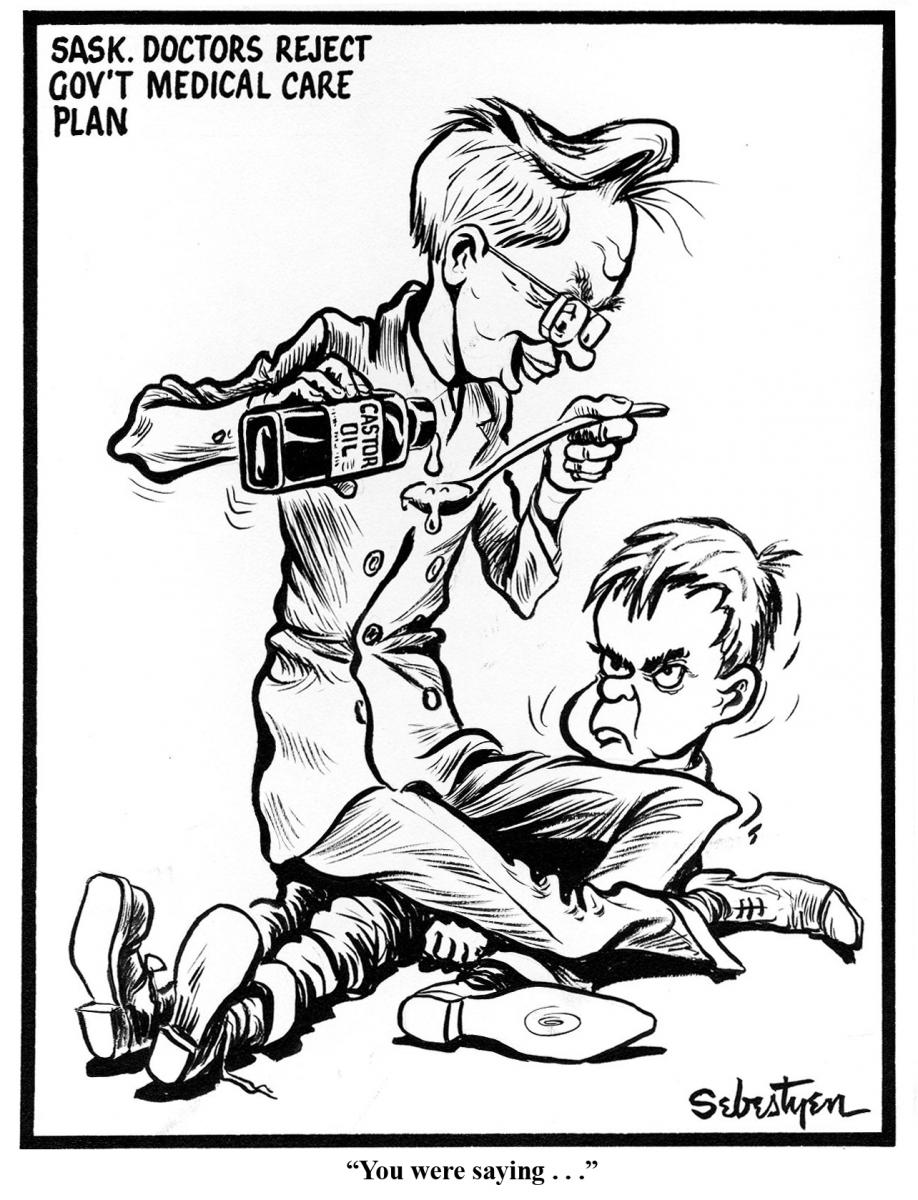
Published in The Saskatoon Star-Phoenix
October 21, 1961. Ed Sebestyen fonds.
PAS Photo F379-698
Cartoons by Ed Sebestyen
Cartoons by Ed Sebestyen
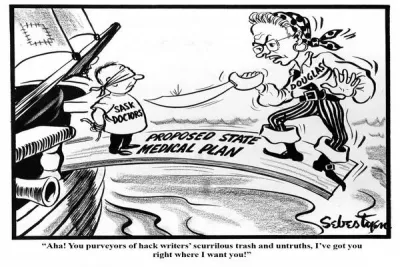
The Saskatoon Star-Phoenix, Published: June 3, 1960. Ed Sebestyen fonds, PAS Photo F379-445
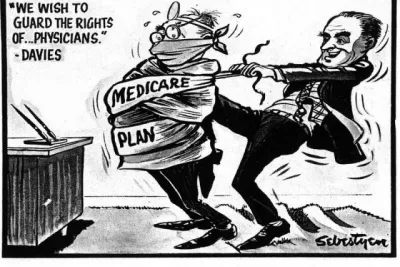
The Saskatoon Star-Phoenix. Published: April 18, 1962. Ed Sebestyen fonds, PAS Photo F379-1293
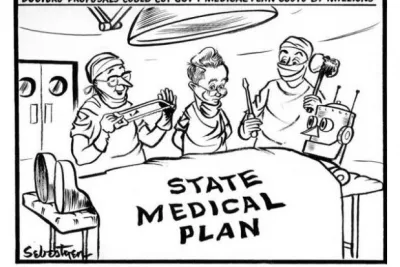
The Saskatoon Star-Phoenix. Published: July 13, 1961. Ed Sebestyen fonds. PAS Photo F379-647
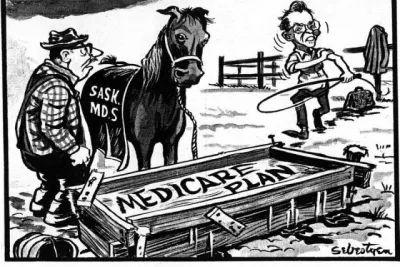
The Saskatoon Star-Phoenix. Published: April 27, 1962. Ed Sebestyen fonds, PAS Photo F379-1293
Primary Source Evidence for Corroboration
The SCAA virtual exhibit “Medicare: A People’s Issue” also includes an abundance of additional primary source documents that may be used as evidence to corroborate the inferences made about the cartoons.
Primary Source Evidence for Corroboration
The SCAA virtual exhibit “Medicare: A People’s Issue” also includes an abundance of additional primary source documents that may be used as evidence to corroborate the inferences made about the cartoons.
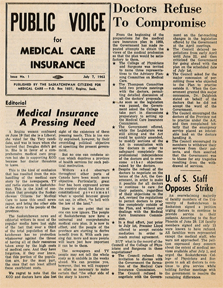
Public Voice for Medical Care Insurance
Issue No. 1, July 7, 1962
Saskatchewan Citizens for Medical Care
PAS Photo G. 261.1.
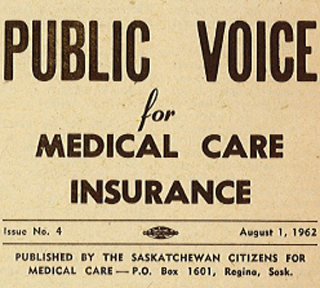
Public Voice for Medical Care Insurance
Issue No. 4, August 1, 1962
Saskatchewan Citizens for Medical Care
PAS Photo G. 261.1
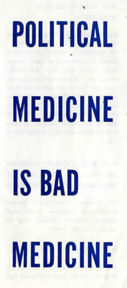
“Political Medicine is
Bad Medicine,” ca. 1962
PAS Photo G. 268.1
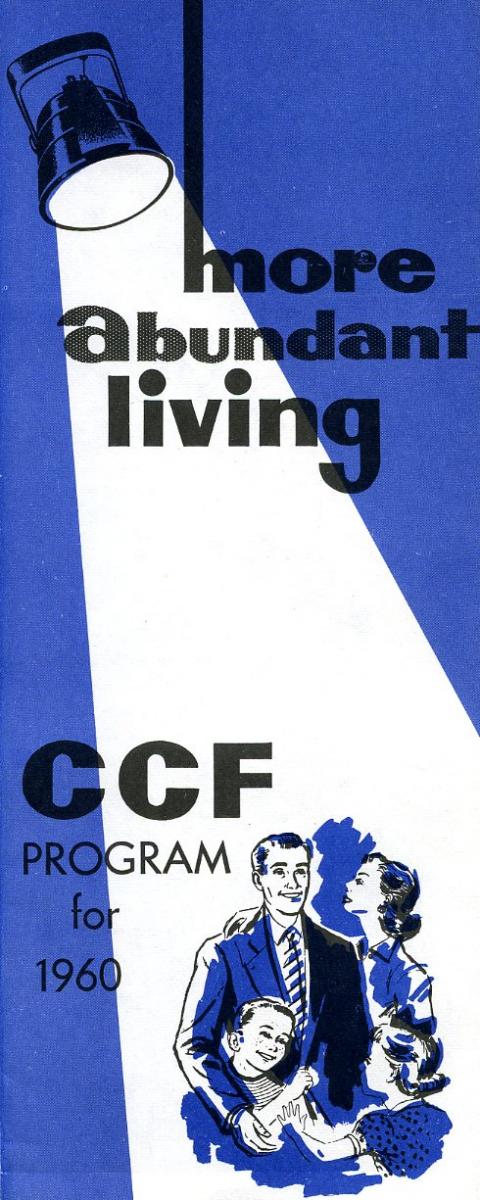
“More Abundant Living:
CCF Program for 1960,”
PAS Photo G.1.1960.8
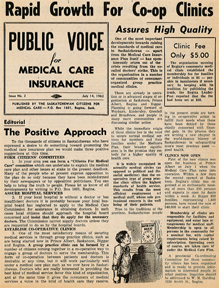
Public Voice for Medical Care Insurance
Issue No. 2, July 14, 1962
Saskatchewan Citizens for Medical Care
PAS Photo G. 261.1
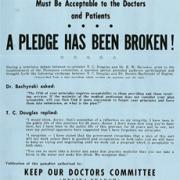
“A Pledge Had Been Broken! Prepaid
Medical Insurance Must Be Acceptable
Doctors and Patients,”. ca. 1962.
Keep Our Doctors Committee. PAS Photo G.521.1
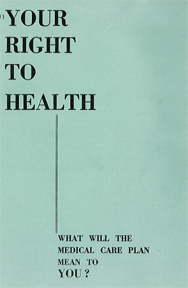
“Your Right to Health: What Will
the Medical Care Plan Mean
to You?,” CCF Sask. Section, 1960
PAS Photo G.1.1960.11
Considering the Sources
Contextualizing
Sources can only be understood in their historical context. We can use other sources of information and other pieces of evidence to contextualize the cartoons. For example, we can learn more about the cartoonist and try to understand his worldview.
Corroborating Inferences using Other Evidence
The process of corroborating a source tests it against other sources of information to help us develop an interpretation. The primary sources about Medicare and the 1962 Doctors' Strike provided below can be used to test what we inferred about the 1962 Doctor's Strike when we studied the cartoons.
- How do these new sources confirm what you already know or inferred about Medicare and the Doctors’ Strike of 1962?
- Do these sources extend what you know about the topic? Do they challenge what you have already examined?
- What makes these sources important pieces of evidence?
About the Cartoonist
Ed Sebestyen was hired by the Saskatoon Star-Phoenix in 1949, where he worked as a photographer, engraver, editorial cartoonist, reporter, news editor, managing editor, marketing and general manager, and Executive Vice President (Planning and Corporate Development), until he retired in 1991. His earliest job at the Star-Phoenix was engraving zinc plates to be used in the printing process. He tried his hand at drawing a few editorial cartoons that were well-received by the paper's editorial staff, and this developed into work as the Star-Phoenix's first and only full-time editorial cartoonist (c. 1957-1964). Sebestyen recalled this period as the best of his newspaper career.
Sebestyen and the Star-Phoenix published four books of his editorial cartoons: An Assortment of Sebestyen Cartoons from the Saskatoon Star-Phoenix (1959); Another Assortment of Sebestyen Cartoons from the Saskatoon Star-Phoenix (1960); and I (1961); and Is There A Doctor In The House: A Case History, In Cartoons, on Saskatchewan's Medical Care Plan (1962).
Learn more about Ed Sebestyen, the Ed Sebestyen Collection at the Provincial Archives of Saskatchewan, and about the publication of Is There A Doctor in the House? by the Saskatoon Star-Phoenix in 1962.
Historical Thinking Concepts:
Evidence: How do we know what we know about the past?
Guidepost 1: History is an interpretation based on inferences made from primary sources.
Guidepost 3: Analysis includes sourcing: finding out about when and why the source was created and by whom.
Guidepost 4: A source should be analyzed in relation to its context; the conditions and worldviews prevalent at the time.
Guidepost 5: Corroborating inferences from a single source with information from other primary or secondary sources is part of evidence analysis.
Adapted from The Big Six Historical Thinking Concepts by Peter Seixas and Tom Morton (Toronto: Nelson Education, 2013)